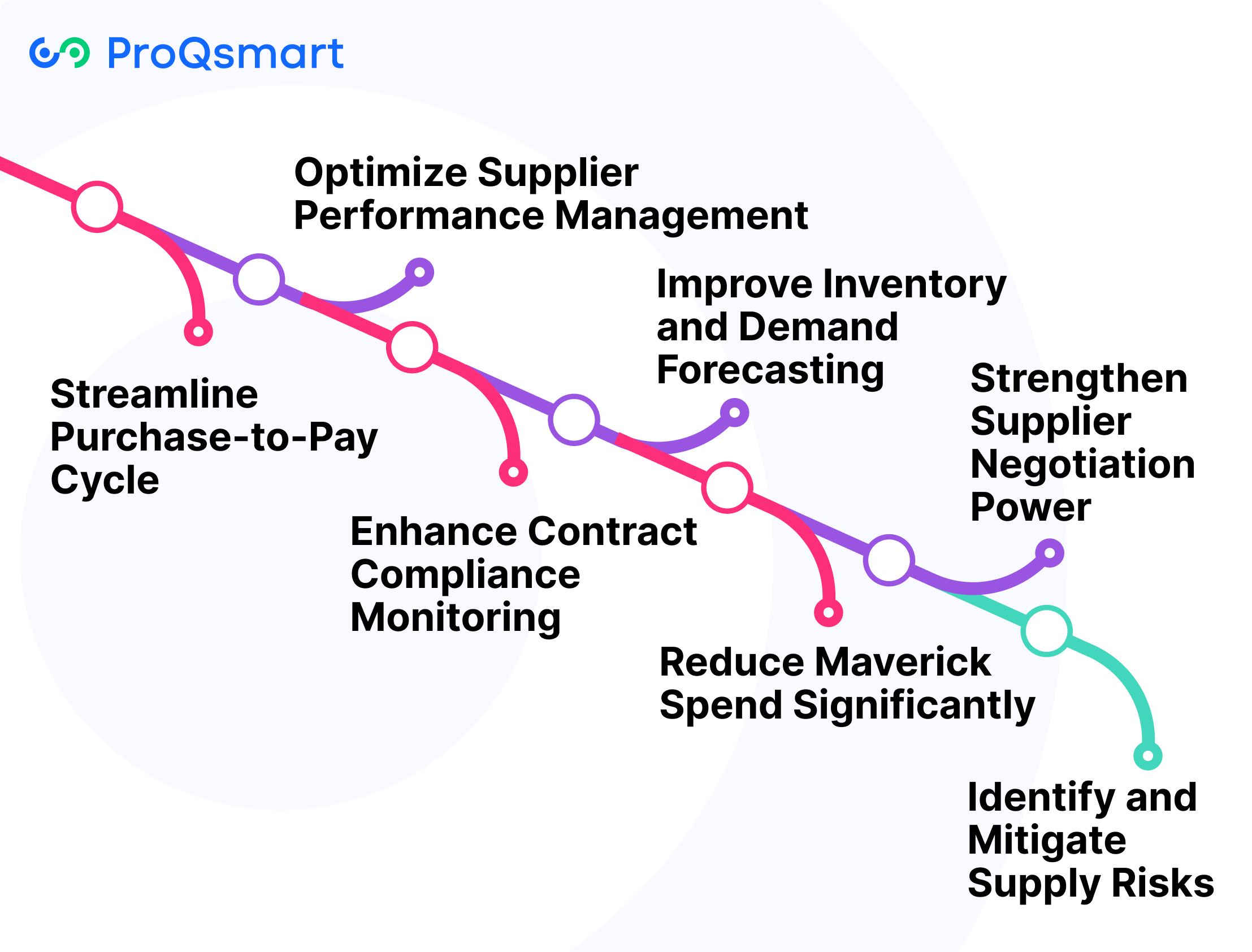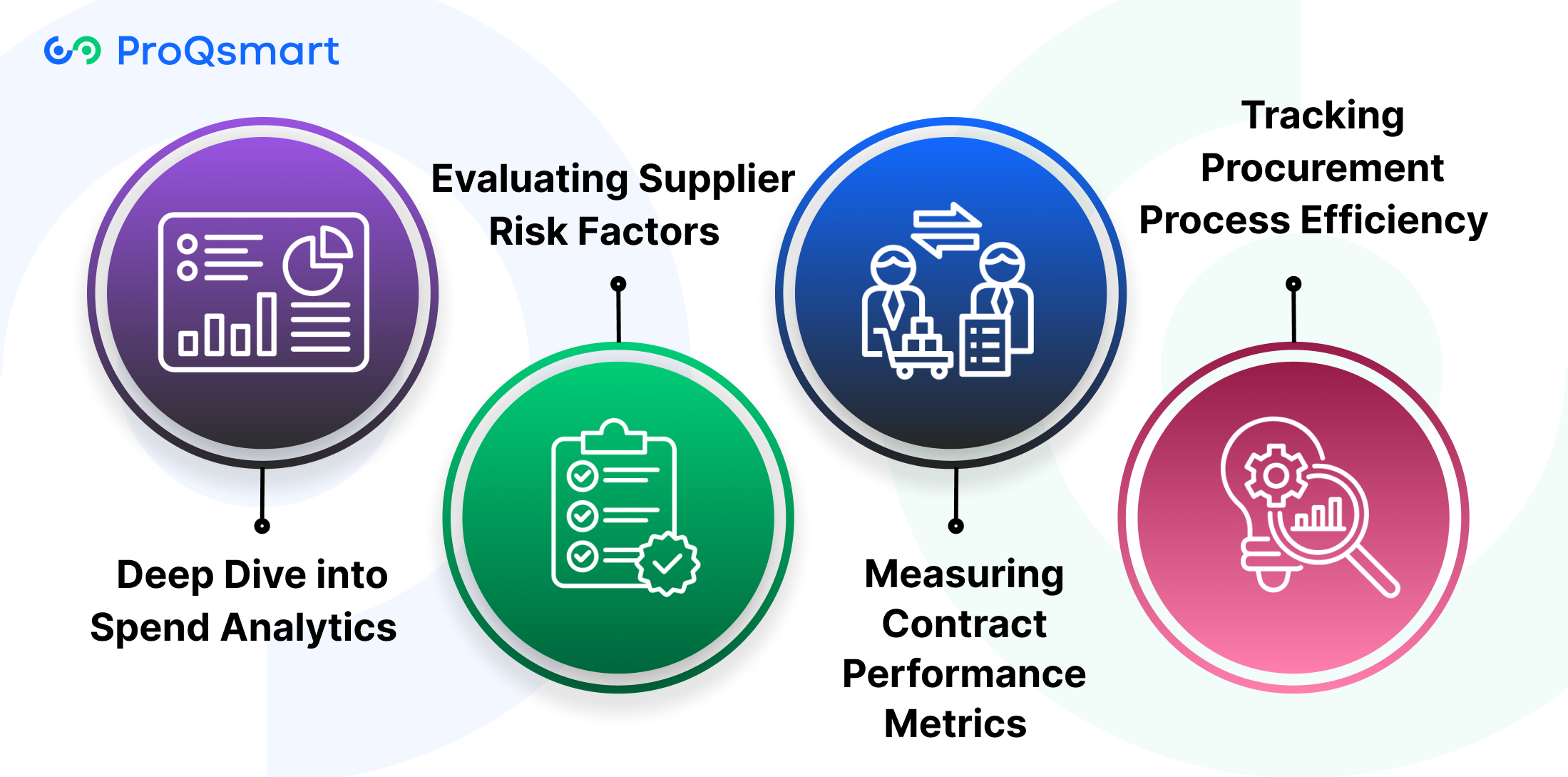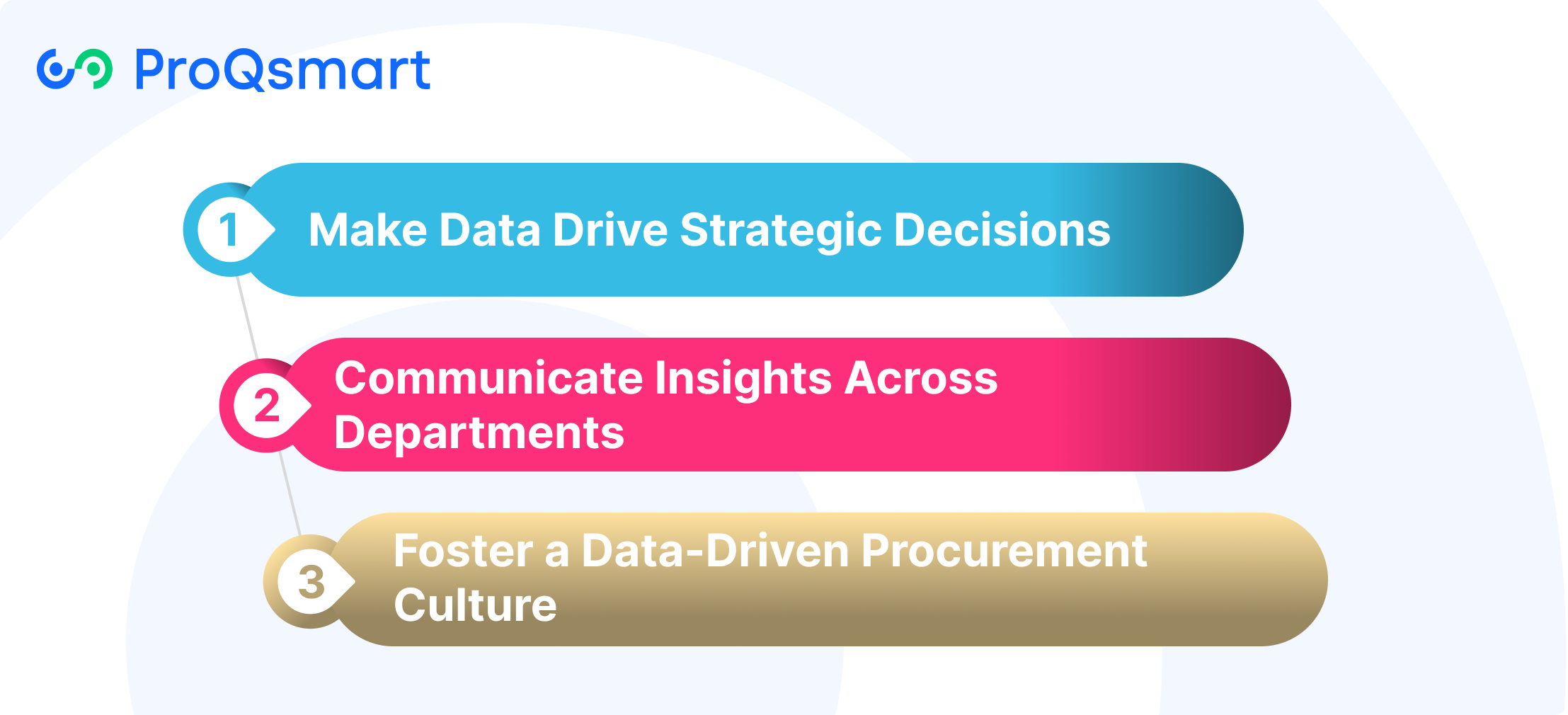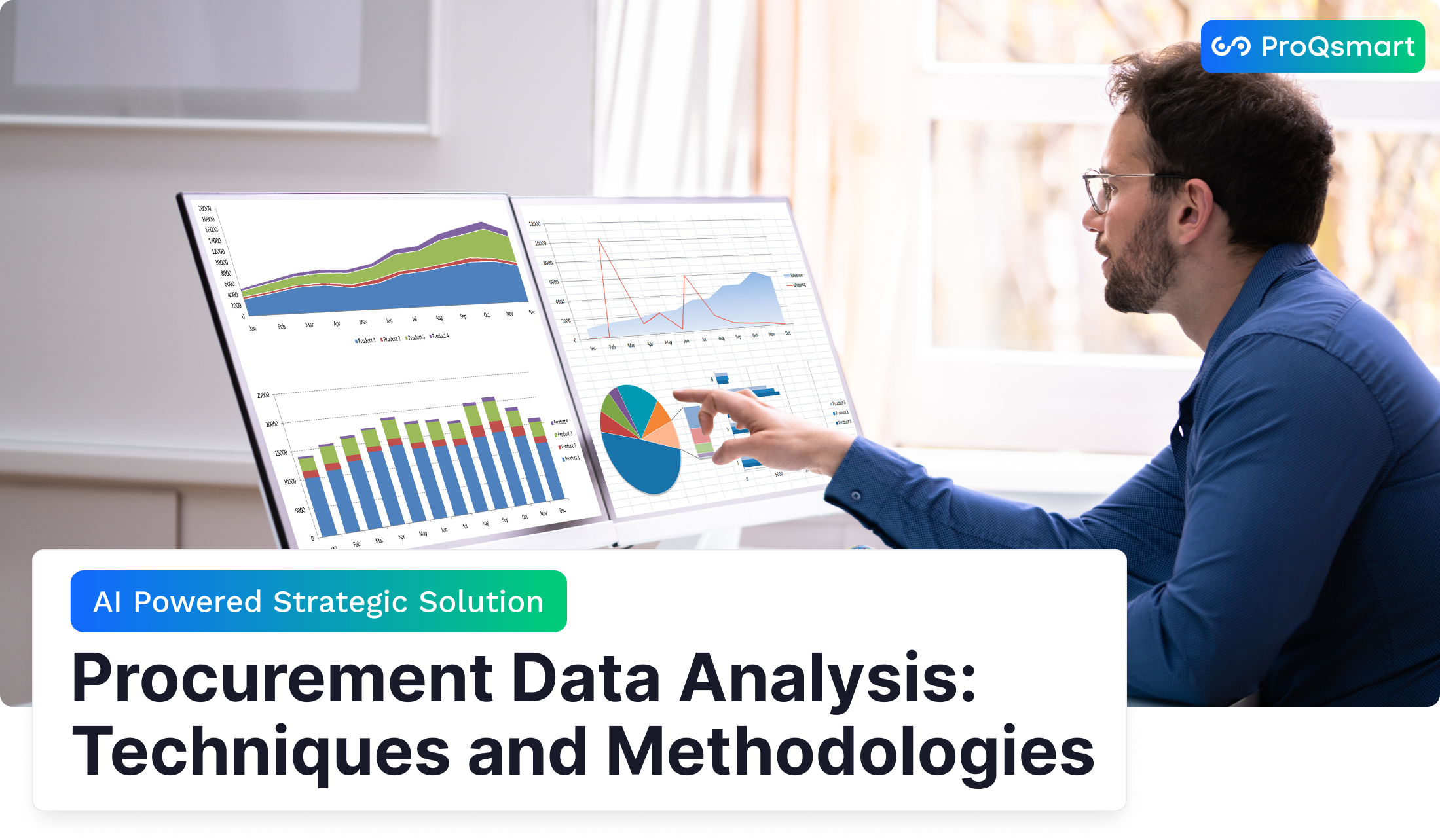Procurement data analysis is essential for organizations seeking smarter purchasing decisions and optimized supply chain performance. With vast amounts of data generated-from purchase orders to supplier metrics-the key challenge is turning this information into actionable insights that drive cost savings, reduce risks, and improve efficiency.
By applying a range of analytical techniques, procurement teams can move beyond basic spend tracking to identify patterns, uncover inefficiencies, predict trends, and make informed sourcing decisions. Methods such as category profiling, Pareto analysis, and supplier segmentation help pinpoint opportunities and enhance supplier management.
The greatest benefits come from integrating diverse data sources, cleansing and organizing data, and using AI-powered tools to automate analysis and visualize key metrics. This approach accelerates decision-making, improves transparency, supports contract negotiations, and strengthens supplier performance.
This article explores the core techniques and methodologies of procurement data analysis, providing practical insights to help you enhance decision-making, control costs, and build a more resilient supply chain.
What Is Procurement Data Analysis?
Procurement data analysis uses data analysis methods on public procurement data. Vishal, with his deep roots in procurement and supply chain management, knows how powerful this can be. Procurement data analysis helps to visualize spending patterns, reveals potential cost-saving opportunities, and improves sourcing strategies.
Finally, it fosters smarter procurement decisions and provides targeted and timely insights into the full procurement lifecycle.
Procurement data analysis is the process of examining past data to identify trends and patterns, enabling companies to make data-driven decisions. This analysis is more than just looking at some numbers. It zeroes in on collecting actionable data from a variety of sources, including ERP systems and supplier databases.
Through data analysis of historical activity, agencies can better project demand trends, forecast market prices, and evaluate supplier performance. Based on procurement data analysis, Vishal is able to identify which of their suppliers are truly “strategic” versus “bottleneck.” This type of classification allows him to better target resources and develop more focused strategies.
Going from traditional approaches to procurement data analysis using new technology analytics software and AI is a huge step forward. There are four common types of analytics used in procurement: descriptive, diagnostic, predictive, and prescriptive.
By utilizing procurement data analysis, organizations can identify opportunities to streamline procurement processes, cut costs, and strengthen relationships with suppliers. Common examples include spend analysis, supplier pricing comparisons, purchase volumes, contract negotiation and compliance, supplier performance metrics, and demand forecasting.

How Procurement Data Analysis Boosts Efficiency

Today, effective procurement analytics has become an essential component of any contemporary supply chain strategy. It allows procurement organizations to plan more effectively, improve efficiency, and reduce costs. By leveraging procurement analytics, companies can find areas that need improvement, predict future trends, and build stronger relationships with suppliers, resulting in greater efficiency and a more competitive advantage.
1. Streamline Purchase-to-Pay Cycle
Procurement data analysis helps streamline the purchase-to-pay cycle. By analyzing every stage of the process from order to payment, companies can identify bottlenecks and inefficiencies. For instance, maybe data reveals that an approval step for a specific purchase is taking too long and creating unnecessary delays.
Equipped with this data, businesses can automate and streamline various aspects of the cycle. Data can help agencies automate the invoice processing cycle to minimize manual errors and save time lagging on payments. By tracking KPIs such as cycle time, companies can quantify the impact of these improvements. For example, cutting the average invoice processing time from 10 days down to 5 days will have an immediate impact on cash flow. This is where procurement analytics tools really make a difference in accelerating the purchase-to-pay cycle.
2. Optimize Supplier Performance Management
Analyzing procurement data helps evaluate how well suppliers are performing. Key metrics, such as on-time delivery, product quality, and responsiveness to issues, can be tracked and analyzed through effective procurement analytics. This data reveals areas where suppliers excel and where they need to improve, providing valuable insights for procurement analysts.
Supplier performance data helps public agencies understand how to avoid negative impacts on project outcomes. If procurement metrics analytics show that a supplier’s product quality is below standard, the company can work with the supplier to address the issue. This could include supplying them with additional training, implementing tighter quality control processes, or, in some cases, locating a new supplier altogether.
Using a supplier scorecard system is the ideal place to start getting a handle on supplier performance. This system employs a consistent scoring approach that evaluates each supplier on all of the metrics listed above, offering a comprehensive look at the supplier’s performance. For instance, a scorecard could measure on-time delivery, quality, cost, and service, enabling procurement managers to make informed decisions based on advanced procurement analytics.
Data-driven analysis helps ensure you are working with the right suppliers, saving money and providing better service. By sharing performance data with suppliers, companies can leverage procurement analytics to work together in identifying solutions and developing stronger, more effective partnerships. If a supplier is regularly late, the company would penalize them while collaborating to determine the underlying cause and develop a corrective action plan to address and prevent the delay.
3. Enhance Contract Compliance Monitoring
Procurement data analysis can contribute to better compliance with contracts and agreements, enhancing the effectiveness of procurement analytics solutions. By monitoring contract coverage and compliance rates, companies can reduce risk significantly. This entails tracking whether suppliers adhere to pricing contracts, timeliness guarantees, and quality commitments, which are crucial aspects of effective procurement analytics.
Monitoring contract coverage and compliance rates are key to reducing risk. If a company finds that most of its contracts aren’t being adhered to, there’s an incentive to address that issue. It has the power to get this right. This can include things like renegotiating contract terms, introducing more robust oversight measures, or in some cases, terminating contracts with persistent offenders.
Additionally, contract analytics tools play a vital role in tracking and analyzing contract performance to flag underperformance or other issues before they escalate. These advanced procurement analytics tools are designed to improve the analysis of contract terms, track performance against those terms, and notify procurement teams when expectations are not met. For example, the tool would automatically identify instances where a vendor is charging more than the contracted price, thereby enhancing compliance and accountability.
Data-driven insights can go a long way in holding vendors accountable and minimizing compliance risk. By using data to hold vendors accountable for meeting their contractual obligations, companies can reduce the risk of non-compliance and associated costs. If a supplier is consistently not meeting quality compliance, the organization can choose to no longer work with them. When things go wrong, they can use data to hold contractors accountable or even pursue damages.
4. Improve Inventory and Demand Forecasting
Procurement data analysis can help agencies better understand their future demand and calibrate their inventory accordingly. By utilizing procurement analytics solutions to examine previous spending patterns and sales trends, companies can improve their forecasting and planning. This approach allows them to prevent stockouts, reduce waste, and enhance overall supply chain efficiency.
Analyzing historical spending patterns and sales trends is essential for procurement analysts seeking to achieve accurate inventory forecasts. For example, if a company identifies a seasonal spike in demand for a particular product, it can leverage procurement analytics to adjust its inventory levels accordingly. This strategic tool enables them to maintain the right amount of stock to meet demand without incurring unnecessary storage fees.
Predictive analytics software can help organizations better predict changes in demand and adjust inventory levels to meet those demands proactively. These tools utilize advanced procurement analytics techniques to analyze historical data from various sources and uncover patterns that can aid in forecasting future demand. For instance, a company might employ these analytics capabilities to anticipate demand for a new product, effectively managing the influx of data they encounter.
Data-driven insights allow for proactive measures that can prevent stockouts, minimize waste due to overstocking, and enhance overall supply chain efficiency. By gaining a clearer understanding of demand through effective procurement analytics, companies can optimize their inventory levels, reduce the risk of stockouts, and minimize waste from overstocking. Ultimately, this leads to a more streamlined and efficient procurement landscape.
5. Reduce Maverick Spend Significantly
Procurement data analysis is the only way to identify maverick spend. This is when employees purchase supplies outside of normal procurement channels, resulting in maverick spend or wasteful spending. By closely monitoring spending patterns and quickly identifying unauthorized purchases, organizations can improve visibility and control over all their spend.
Understanding where and why employees are spending money is an important step toward minimizing maverick spend. For example, if a company notices that employees are frequently purchasing office supplies from unapproved vendors, it can take steps to address the issue. This could include raising awareness among employees about policies related to procurement, creating more severe approval processes, or supplier consolidation.
Spend analysis tools deliver the transparency into spend that organizations need to monitor and reinforce procurement policies. These tools are better able to analyze spending data, proactively identify patterns of maverick spending, and easily generate reports that allow procurement to focus on the most concerning areas. For example, a spend analysis tool can help identify when a department consistently exceeds its travel budget. Having this insight allows their managers to make proactive decisions to stop overspending.
6. Strengthen Supplier Negotiation Power
Procurement data analysis yields valuable insights to fortify negotiation positions with suppliers. Through detailed procurement analytics solutions, including an examination of cost breakdowns and market benchmarks, organizations can uncover areas where they can save costs. This procurement analysis data can then be leveraged to show purchasing power and negotiate improved terms and pricing.
Cost breakdowns and market benchmarks are necessary analytic tools to identify areas of greater cost savings potential. For example, a procurement data analyst might find that a company is paying a premium over the market average price for one raw material. Armed with this data, it can go back to its supplier and confidently negotiate a lower price.
Utilizing advanced data analytics techniques to prove their purchasing power and negotiate more favorable terms would be key. By showing suppliers the volume of business it does with them, a company can demonstrate its purchasing power and negotiate more favorable terms. For example, one procurement manager may be able to provide a supplier a larger, more beneficial order. In exchange, the supplier would be able to commit to a reduced unit cost.
7. Identify and Mitigate Supply Risks
Procurement data analysis plays a vital role in identifying and mitigating potential supply risks. By leveraging procurement analytics solutions, businesses can analyze various supplier risk factors, from financial stability to geographic location, and proactively address potential disruptions before they arise. Evaluating these risk factors is crucial for effective procurement analytics, especially for companies relying on suppliers in areas prone to natural disasters, which may necessitate diversifying their supplier base to minimize risks.
Utilizing advanced procurement analytics tools, organizations can continuously monitor supplier performance and flag potential disruptions. These procurement analytics solutions can track a range of risk factors, including regulatory compliance and geopolitical exposure. For instance, a robust risk analytics tool can alert firms when key suppliers face financial instability, such as impending bankruptcy, allowing them to make strategic moves to mitigate supply interruption risks.
Data-driven insights from procurement data analysts serve as powerful business tools to diversify the supplier base, enhance contingency plans, and safeguard the continuity of the supply chain. By implementing effective sourcing strategies, procurement organizations can strengthen their operational resilience and adapt to changing market conditions.
Ultimately, the integration of insightful procurement analytics into the procurement analysis process empowers businesses to make informed decisions, thus maintaining a stable supply chain and fostering beneficial supplier relationships. This proactive approach not only protects against disruptions but also enhances overall business performance.
Key Areas of Procure Analytics

Procurement analytics delves deep into data associated with all aspects of the procurement process. This can be everything from supplier performance, adherence to contracts, and spend analysis. The objective is to learn and inform intelligent direction.
If you want a successful procurement analytics, look beyond the shiny dashboards. From the data collection, analysis and visualization to producing understandable and actionable insights.
Deep Dive into Spend Analytics
Spend analytics refers to the practice of analyzing procurement spending data from multiple sources to identify trends. This is essential for identifying cost-saving opportunities and more informed financial decisions.
For example, a construction company might use spend analytics to see where they’re overspending on materials and find cheaper suppliers. Spend analytics tools provide increased visibility into spending and underlying trends.
With data-driven insights, organizations can find opportunities to optimize spending and reduce costs, yielding stronger financial performance.
Evaluating Supplier Risk Factors
Procurement data analysis can be used to evaluate supplier risk factors. It’s important to assess a supplier’s financial stability, where they’re located, and if they follow regulations.
Risk analytics tools can help monitor supplier performance and identify potential problems. For instance, ProQsmart helps strengthen relationships with suppliers and automates pre-qualification and manages subcontractors.
Data-driven insights can help diversify the supplier base, create backup plans, and reduce supply risks.
Measuring Contract Performance Metrics
Procurement data analysis allows us to look at other contract performance metrics. To this end, it is imperative to monitor aggregate and contract-level coverage, compliance rates, and resulting cost savings.
Contract analytics solutions can ensure performance metrics are well-defined, documented, monitored, and all parties are held accountable. Using data-driven insights allows agencies to hold vendors accountable, lower compliance risk, and negotiate better contract terms.
Measuring Contract Performance Metrics, ProQsmart leads to meaningful cost savings and offers unparalleled transparency.
Tracking Procurement Process Efficiency
Procurement data analysis can help track how efficient the procurement process is. It is essential to measure cycle times, processing costs and other KPIs.
This is where procurement analytics software comes in, enabling governments to continually monitor process performance and find opportunities for improvement. Consider ProQsmart which automates workflows, increases regulatory compliance with accurate and auditable sourcing data.
These data-driven insights help to streamline processes, reduce costs, and increase overall procurement efficiency.
Essential KPIs for Procurement Success
Essential KPIs are necessary for measuring procurement success and identifying where to focus efforts to improve. Regularly tracking these metrics set the stage for data-driven decisions, optimizing strategies, and driving meaningful progress toward defined business objectives.
Procurement dashboards use visualizations to represent these KPIs, giving you up-to-the-minute looks at how you’re performing.
Cost Savings and Avoidance Metrics
Cost savings and avoidance metrics are essential for procurement success. Tracking cumulative savings achieved through procurement strategies demonstrates the value procurement brings to the organization.
Cost analysis tools help identify cost-saving opportunities and measure the impact of procurement initiatives, optimizing spending, reducing costs, and improving overall financial performance.
For instance, ProQsmart, a procurement platform, drives significant cost savings by leveraging AI to make informed decisions. Cost reduction is a primary goal, and tracking cost savings is crucial to measure the effectiveness of strategies.
Procurement ROI, calculated by dividing annual cost savings by annual procurement cost, illustrates the impact on the organization.
Supplier Lead Time and Reliability
Supplier lead time and reliability are key procurement KPIs. Monitoring supplier lead times and delivery performance ensures timely supply of goods and services.
Supplier performance management tools allow procurement leaders to track supplier performance against metrics and see possible risks before they become damaging. A supplier availability rate of 90% or higher shows more efficiency and a healthy supply chain.
Leveraging these data-driven insights, procurement professionals can better optimize their supply chain, minimize delayed deliveries, and provide an overall better customer experience.
Continuously check and evaluate suppliers’ capacity to deliver as per the contract agreement Terms and Conditions supplier performance monitoring with ProQsmart.
Purchase Order Cycle Time
Purchase order (PO) cycle time is a key procurement KPI. Monitoring the length of time it takes to move POs from creation to approval highlights workflows bottlenecks.
Procurement analytics software can track cycle times. The PO cycle time varies between hours and days. By categorizing suppliers by their cycle time, you can more accurately judge their performance.
ProQsmart automates workflows and centralizes data to streamline procurement processes, save money, and increase overall procurement efficiency.
Contract Compliance Rate
Contract compliance rate is an important KPI. Measuring what percentage of your overall spend is under contract and how well vendors adhere to contracts fosters employee and vendor accountability.
Contract analytics tools provide an overview of how your contract is performing, allowing you to detect issues before they arise. For a mid-size company, 50% compliance overall is an achievable goal.
Guaranteed compliance ProQsmart protects you against regulatory violations due to inexact and non-auditable sourcing data.
Spend Under Management Percentage
Spend under management is one of the most important procurement KPIs. Keeping track of the total dollar amount of spend that is actively managed by the procurement team increases the organization’s influence over their overall spend.
One way to start controlling more spend is by centralizing the procurement system. Streamlining operations using data-driven insights cuts costs and increases top- and bottom-line financial performance.

Aligning Analytics with Business Goals

That alignment — using measurable data to inform strategic decisions and drive continuous improvement — is the lifeblood of modern procurement and analytics’ biggest promise. Ensuring insights are communicated across departments lays the foundation for a data-driven culture.
By aligning procurement strategies with business goals, organizations are able to realize greater strategic value and drive enhanced organizational performance. This alignment takes skills learned through past experiences and comparable industry situations.
Make Data Drive Strategic Decisions
Aligning data to drive strategic decisions not only enhances procurement performance, but increases business value. Data-driven insights are critical to informing contracting strategies and maximizing available funding.
Analytics tools can be used to identify cost-saving opportunities and improve overall supplier management. Equipped with the right analytics and data, organizations can secure favorable contracts and foster productive relationships with suppliers.
ProQsmart is a procurement intelligence platform that uses the power of AI to enhance procurement for all businesses. Features such as E-tenders for simplified bidding, automated workflows, and real-time budget tracking help them operate efficiently and make informed decisions.
By unlocking data-driven insights, organizations can make better organizational decisions and strategically align with their goals while obtaining a competitive advantage.
Communicate Insights Across Departments
By communicating these insights across departments, you facilitate the growth of a data-driven culture within your procurement process.
It’s critical to communicate analytics and insights from procurement to other stakeholders in various departments to better inform decision-making. Data visualization tools can help present that data clearly and concisely, allowing everyone to go beyond the numbers and understand the implications.
When harnessed, these insights can help inform better decision-making and deliver greater strategic value throughout the organization. Procurement analytics is perfect for identifying spot savings, which feeds directly into the bottom line for profit and loss statements.
Foster a Data-Driven Procurement Culture
Creating a data-driven procurement culture not only enhances procurement performance, but it creates significant business value. This means training procurement professionals in data analysis techniques and tools.
Fostering a culture where decisions are made based on data and not just gut feeling goes a long way. To best allocate resources, suppliers need to be segmented into strategic, bottleneck, leverage, and non-critical categories.
Data analytics and business intelligence should become core capabilities for all procurement professionals. Remember, the approach has to be highly tailored, since there is no silver bullet.
Conclusion
Procurement data analysis has emerged as a critical driver for organizations aiming to make smarter, faster, and more strategic sourcing decisions. By leveraging advanced analytical techniques, procurement teams can move beyond basic spend tracking to uncover patterns, anticipate risks, and identify opportunities for cost savings and process improvements. Integrating and analyzing data from multiple sources enables better supplier selection, more effective contract negotiations, and improved category management, leading to greater transparency and operational efficiency.
The adoption of AI-powered tools further enhances this process by automating data cleansing, highlighting trends, and delivering actionable insights in real time. These capabilities empower procurement professionals to respond quickly to market shifts, mitigate supply chain risks, and ensure compliance with organizational goals. Ultimately, procurement data analysis transforms raw information into a strategic asset, supporting innovation and sustainable growth.




